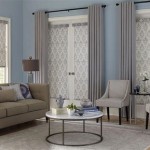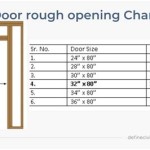How Much Does An Interior Designer Make In NYC?
New York City, a global hub for design and innovation, presents a dynamic marketplace for interior designers. The compensation for interior designers in NYC is influenced by a multitude of factors, making it a complex yet fascinating subject to explore. Understanding the various elements that contribute to an interior designer's earning potential is crucial for both aspiring and established professionals in this competitive field.
The financial rewards for interior design professionals in New York City can vary significantly. Several factors come into play when determining an interior designer’s salary, including experience level, specialization, the type of firm or company they work for, their individual skills and reputation, and the overall economic climate. These elements collectively shape the landscape of interior design compensation in NYC.
Experience Level: A Primary Driver of Earning Potential
Experience is a paramount determinant of an interior designer’s earning capacity. Entry-level positions typically command lower salaries compared to those with years of proven experience and a robust portfolio. A junior interior designer, often just starting their career after completing their education, may earn a starting salary that reflects their limited professional exposure. As they accumulate experience, their value to the firm or client increases substantially, leading to commensurate increases in compensation.
Mid-career interior designers, possessing a solid track record and a refined skill set, can expect a significant jump in salary. They are capable of handling more complex projects, managing client relationships effectively, and contributing meaningfully to the design process. Their experience allows them to work with greater autonomy and efficiency, making them highly sought-after assets to any design firm.
Senior interior designers, at the apex of their careers, command the highest salaries. These individuals possess extensive experience, a deep understanding of design principles, and a proven ability to lead large-scale projects. They often hold leadership roles within their firms, mentoring junior designers and shaping the overall design direction of the company. Their expertise and reputation are invaluable, justifying their higher compensation packages.
Specialization and Industry Niche: Carving Out a Profitable Path
The specific area of specialization within interior design can significantly impact earning potential. Certain niches are more lucrative than others, driven by market demand and the complexity of the projects involved. Designers specializing in high-end residential design, for instance, may command higher fees due to the scale and scope of the projects and the affluence of the clientele they serve. These projects often involve custom designs, luxury materials, and meticulous attention to detail, requiring a high level of expertise and artistic vision.
Commercial interior design, encompassing office spaces, retail environments, and hospitality venues, also presents distinct avenues for specialization. Designers focused on corporate interiors, for example, may work on large-scale projects for major corporations, demanding expertise in space planning, ergonomics, and branding integration. Similarly, designers specializing in hospitality design cater to hotels, restaurants, and other leisure establishments, requiring a strong understanding of guest experience, brand identity, and operational efficiency.
Sustainable design, a rapidly growing field within interior design, presents another compelling niche. Designers specializing in sustainable practices focus on creating environmentally friendly and energy-efficient spaces, utilizing eco-conscious materials and design strategies. As sustainability becomes increasingly important to clients, designers with expertise in this area are highly valued.
Another influencing element includes the firm's/company size. Compensation at larger, well-established firms often tends to be higher when compared to smaller independent practices. Larger firm have access to more capital and will more readily pay a higher salary to retain their talent.
The Independent Designer vs. The Firm Employee: Weighing the Options
Interior designers in NYC can pursue two primary career paths: working as an employee for an established design firm or operating as an independent freelancer or business owner. Each path presents distinct advantages and disadvantages, impacting earning potential and career trajectory.
Working for a design firm provides a structured environment with a consistent income stream. Employees typically receive a fixed salary, as well as benefits such as health insurance, paid time off, and retirement contributions. This path offers stability and opportunities for professional development, as employees have access to mentorship, training programs, and a collaborative team environment. However, the earning potential may be capped compared to independent designers.
Independent interior designers, on the other hand, have greater autonomy and control over their projects and fees. They can set their own rates, choose their clients, and work on projects that align with their artistic vision. This path offers the potential for higher earnings, as designers can retain a larger share of the project revenue. However, it also requires a strong entrepreneurial spirit, business acumen, and the ability to manage all aspects of the business, including marketing, client acquisition, and financial management. The independent route can also involve an irregular income stream and the responsibility of securing their own benefits.
In any of the aforementioned setups, several other factors remain relevant to the designer's compensation package. These include, but are not limited to, reputation and notoriety, specific skillset such as 3D modeling, and overall market conditions.
Geographic Location within NYC and the Cost of Living: Contextualizing the Numbers
The borough in which an interior designer lives and works within New York City can influence the perceived value of their salary. The cost of living varies significantly across the five boroughs, with Manhattan typically having the highest expenses. An interior designer working in Manhattan may command a higher salary compared to someone working in other boroughs, reflecting the higher cost of living and the premium associated with working in a prestigious location.
The concentration of high-end residential and commercial projects in Manhattan also contributes to the higher demand for experienced interior designers in this borough. Firms located in Manhattan often cater to affluent clients and prestigious brands, requiring designers with specialized skills and a proven track record. This increased demand translates into higher salaries for qualified professionals.
However, living in more affordable boroughs like Brooklyn, Queens, or the Bronx can offset the difference in salary. These boroughs offer a lower cost of living, allowing designers to maximize their earnings and improve their overall financial well-being. The accessibility provided by the city's transportation system also allows designers to commute to projects throughout the city, regardless of their residential location.
Negotiating a Competitive Salary: Strategies for Success
Negotiating a competitive salary is essential for interior designers seeking to maximize their earning potential. Before entering a negotiation, it's crucial to research industry standards and understand the prevailing salary ranges for similar positions in the NYC market. Online resources, such as salary surveys and job boards, can provide valuable data on compensation trends and benchmarks.
Highlighting accomplishments and quantifiable results during the negotiation process can strengthen a designer's position. Demonstrating the value they bring to the firm or client, through examples of successful projects, client testimonials, and revenue generation, showcases their capabilities and justifies their desired salary. Emphasizing unique skills, specialization, or industry knowledge that sets them apart from other candidates can also bolster their negotiation leverage.
Being prepared to discuss benefits packages beyond base salary is also beneficial. Negotiating for additional benefits, such as health insurance, retirement contributions, paid time off, professional development opportunities, or performance-based bonuses, can enhance the overall compensation package and increase the overall value of the job offer. Understanding the firm's compensation philosophy and aligning salary expectations with their budget and policies is crucial for a successful negotiation.
Networking and building relationships within the interior design community can provide valuable insights into salary trends and job opportunities. Attending industry events, joining professional organizations, and connecting with other designers can offer access to information and resources that can inform salary expectations and enhance career prospects.
Finally, when negotiating, be prepared to walk away. Knowing you have other options can provide tremendous leverage and ensure you don't settle for less than your worth. Continuously developing new skills and improving skillset to always remain competitive.

Interior Designers The Nyc Top 20 Daily Design News

The Best Of Usa Top 20 Nyc Interior Designers

Top 10 New York Interior Designers

Interior Designers The Nyc Top 20 Daily Design News

Top Nyc Interior Designers Our Selection Esperiri Milano

2024 New York Trends I Interior Design Trend Forecasting Trendbook

The Best Interior Designers From New York City Part I

Post Pandemic A List Designers Offer Virtual Help For Much Less

New York Interior Designer On Why A Luxury Home Must Anticipate The Owner S Needs Mansion Global

New York School Of Interior Design Overview
Related Posts








